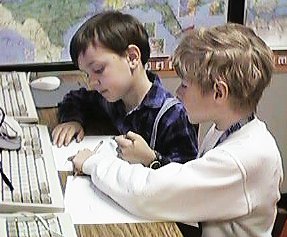What is Peer Editing
The Slide Show
The Student Humor Top Ten
Each one of these links above lead to very creative and educational information. I enjoyed the later of the three the most, simply because the students really put on a good show. I learned a few key points about peer editing. The three steps to Peer Editing are compliments, suggestions, and corrections. After reading this is was easy to read through a classmates paper and give compliments. The suggestions and corrections are a little more harder to write because you have to point out mistakes and no one really wants to do that. I also liked the point the slideshow made dealing with always staying positive. Having a positive attitude when dealing with fellow students will be the easiest way to form friendships and help each other learn. These videos are very instructional and I learned how to better correct and compliment peers work.
I am excited to start editing my students pieces of works, but at the same time I feel that I must improve in my own writing skills in order to do so. I expect to see my students correct my corrections fairly often.
Technology in special education
When I watched this video I noticed that the teacher was quite fond of her children and really cared for each one of them. I thought it was a blessing for these kids to have the technology in the classroom to use to their benefits. I have never really thought about using technology as a tool when dealing with special needs, but now would completely agree that technology is very much a necessity in the classroom.
In my future classroom I will definitely incorporate technology. Now, I feel like I will use it more so in special education more so than regular elementary. I really liked the mouse made for the first student, seeing his smile would be a great gesture of kindness. I am excited to find out what else I can do to better my road to teaching.
My future app
I really liked how you could upload childrens' books to the ipod. Growing up I read Dr. Suess all the time, and to this day I still enjoy reading his rhymes. When I saw that you could put this into the ipod to help kids learn. This takes away the need of the student always needing a guardian there to try and help and pressure.
In the video I could easily see how these instruments could be enjoyable to kids trying to learn. The learning tools are very helpful and really put the knowledge into the child's mind. The computers make the sound loud and it allows the student to see what he/she is doing. It is an immediate response which also is a great benefit.
Harness Your Students
I think Ms. Davis really does a fantastic job with her students and I would be willing to bet her students enjoy being in her class. Just from the responses and the little bit of footage we are able to see shows the students smiling while learning a great deal of world related information. I like how Ms. Davis said that a teacher does not need to know everything in order to be a teacher. She compared a child learning a piece of information for the first time, and the straight shrill and excitment that hits them. If we as educators knew everything, then that feeling would be no more.
I argue that the technology really does bring about a smarter and richer atmosphere for learning. It gets the kids excited, which I would believe to be the most important concept. It also brings kids closer, which I would have argued against weeks past.


"I expect to see my students correct my corrections fairly often." I hope not.
ReplyDelete"I am excited to find out what else I can do to better my road to teaching." Go for it. Let us know what you find.
"...and the straight shrill and excitement..." shrill? Are you sure?